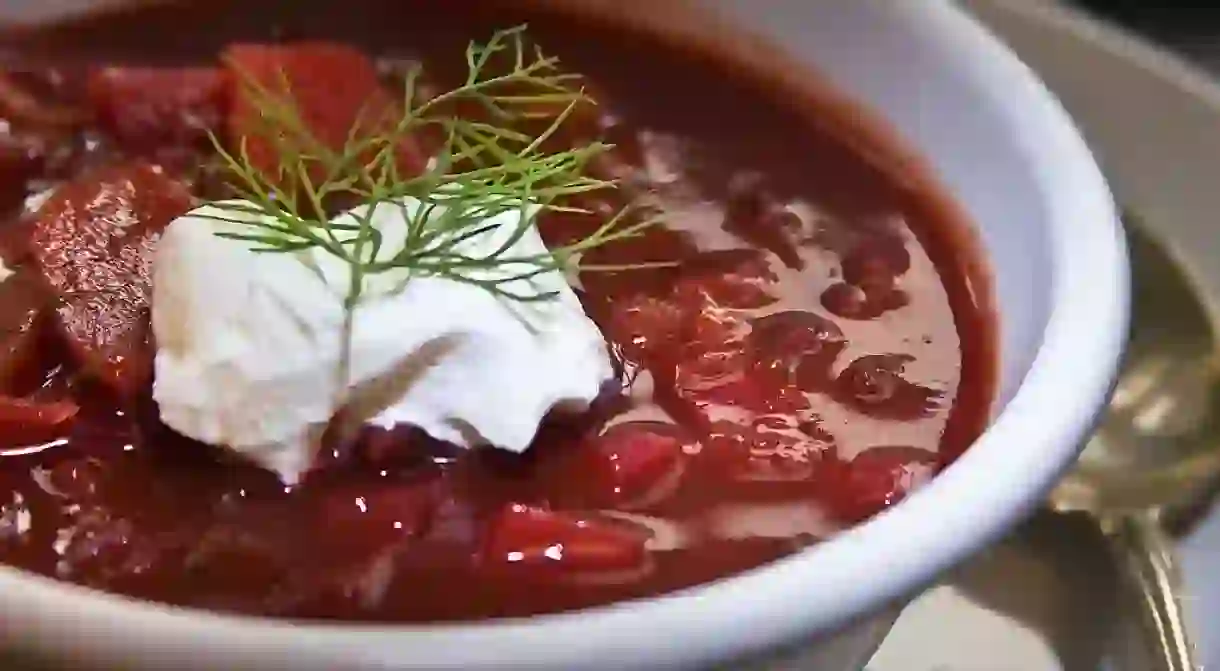11 Traditional Polish Dishes That Will Remind All Poles of Home

Polish cuisine is one for the underdogs of the gastronomic world. Poland offers many unique dishes that are somewhat less available once you leave its borders. This can become a craving for Polish people abroad, and even those who have spent enough time in Poland to have a taste for the local food will be nostalgic for these dishes. Oozing in flavour, brimming in variety and being proudly Polish, these 11 dishes surely represent the country’s food scene to the highest order.
Pierogi ruskie
No visit to Poland should neglect a helping of the country’s finest culinary delight. Welcome to the world of pierogi ruskie. This sumptuous dish is basically semicircular dough-covered dumplings with onion and potato inside. They are often topped with onion and pork crackling, with a side of smietana (sour cream). Try it once, and you’ll never forget it. Be aware that there are many, and endless varieties of pierogi in Poland, including sweet options, but pierogi ruskie is regarded as the original and best one by most Polish people.

Zapiekanki
Officially a one-piece wonder, rather than a ‘dish’, but who could leave the famous zapiekanki off such a list? This thin piece of bread (in singular form, zapiekanka) is doused with mushrooms and a range of toppings to give the Polish their own special easy-to-eat snack. Eat it on the move, at festivals or for a quick lunch. While French cheese baguettes and Italian pizza might seem similar, for the Polish, nothing can truly replace their beloved zapiekanki.

Gołąbki
With a delicious flavour and a sensational aroma right from the first burst of a gołąbki, these cabbage rolls are easy to devour and fall in love with. There are a few different options, but normally the gołąbki are packed with rice and pork or beef, oven-cooked and served with rich tomato sauce and cucumber. Interestingly, the term gołąbki actually means ‘little pigeon’, but there’s no cooked bird within.

Bigos
Bigos, sometimes referred to as ‘Hunter’s Stew’, is a hearty, meaty dish and the epitome of Polish nourishment. Bigos is a dish made of chopped meat that is stewed before sauerkraut and shredded fresh cabbage are added. It is often served in a large dish for sharing as a starter, but can also act as a filling standalone meal.

Grillowany oscypek
Cheese lovers need to delve into this pure culinary delight. Oscypek is a cheese made from sheep’s milk, and is delicious eaten cold or cooked. Hailing from high in the Polish Tatra Mountains, a trademark dish is when the cheese is grilled and served with cranberries in sauce and lettuce or rocket. The cheese has been a protected brand name in Europe since 2007.

Tatar wołowy / Befsztyk tatarski
Tatar, the Polish version of what is sometimes referred to as steak tartare, is something that is hard to get abroad. It’s the pure Polish beef from well-reared cattle. It’s the ogorki (gherkins) that accompany it. It’s the Polish bread you eat it on. For many Poles, nothing will replace a good feed of tatar down at a local eatery on the streets of Warsaw.

Kotlet schabowy
Poland’s finest main course could well be the kotlet schabowy. This is basically a breaded pork chop (normally without the bone) that is served with cabbage, beetroot, potatoes and other vegetables. It continues to be served at weddings and family dinners the country over. Despite the fact that the ingredients are not even Polish, its association with the country is years deep. In traditional Polish restaurants in cities like Bydgoszcz or Poznań, a good-value and tasty kotlet schabowy is never far away.

Golonka pieczona
Golonka means pork knuckle, and pieczona means roasted. It is a dish normally saved for parties, family dinners and large banquets. It can be served with potatoes, cabbage, mixed vegetables or even with bigos or oscypek.

Chłodnik
Poland serves up some truly exceptional soups, and Chłodnik is a healthy gem. It’s a cold beetroot soup with egg and dill inside. Normally a boiled egg is halved and placed on top. Chłodnik is instantly recognisable by its rich pink colour, and the soup is a common starter all over the country. It can be served with bread.

Żurek
Another intense Polish soup is Żurek. Żurek is a Slavic soup that can be found in Eastern European countries, but the Polish version – made from rye, kiełbasa (Polish sausage) and ham – is a tough one to replicate. Żurek is best devoured when served inside a large crusty bread roll.

Barszcz czerwony
Barszcz czerwony (red beetroot soup) is another truly intense-tasting Polish soup that typifies the country’s healthy food culture. Many Poles love a strong bowl of Barszcz czerwony on a cold winter day, served up with a dollop of smietana (sour cream) on top and with their favourite bread on the side. Needless to say that a lot of the dishes on this list also come with the option of a shot or two of Polish vodka.














